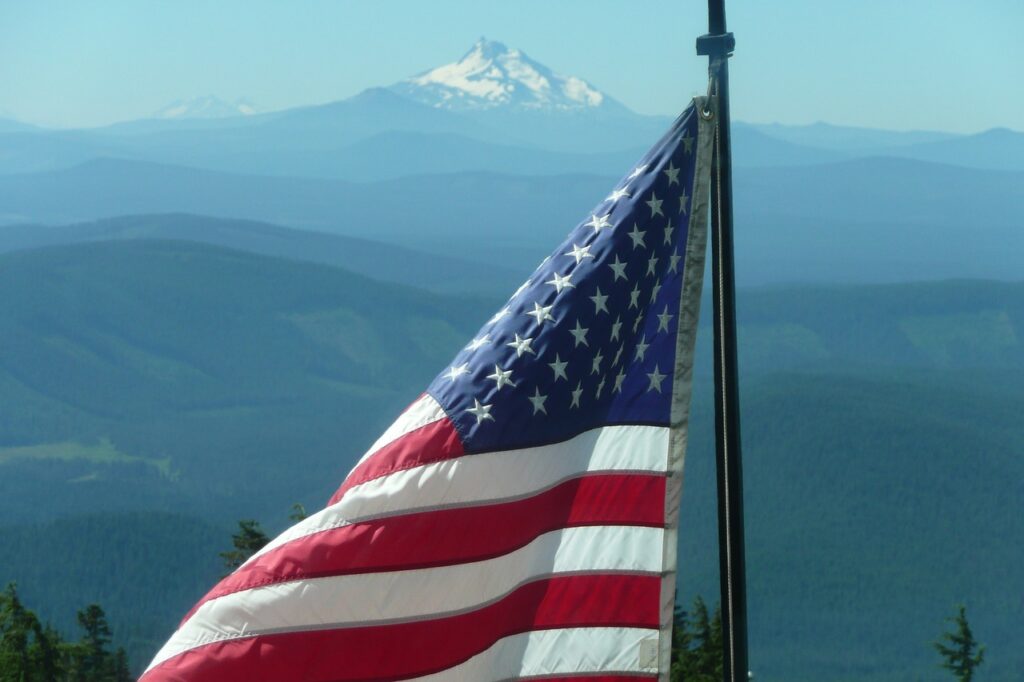
Face It: Flag Day Is Boring (Let’s Move It To August!)
If you’re one of the few faithful red-blooded American patriots who flies Old Glory on all official and optional federal holidays — and remembered that today, June 14, is one of them — then bravo!
If you’re someone who flies the U.S. flag every day, then congratulations: You’ve made it to yet another day to wave that tattered Star-Spangled Banner of yours. Maybe today would make for an excellent opportunity to run out and buy a replacement before your pink-white-and-periwinkle banner is confused for a Pride Month statement.
Sadly, one of our nation’s purest and more primordial rallying points — a day simply designed for no other purpose than to celebrate the legal birthday of the American flag — is stuck in a cultural holding pattern. Here’s the problem: It’s smack-dab in between fellow flag-furling festivals Memorial Day and Independence Day. We may as well just call June and early July Flag Month for what that’s worth.
To muddle matters even further, Flag Day comes between the Pearl Harbor remembrance day and Father’s Day, which both tend to evoke their share of love of what makes America great. And now with Juneteenth as a federal holiday, depressingly-neglected Flag Day is relegated to playing short-stop when it knows it would be a star pitcher if just given the chance.
This writer has a neighborhood cookout and a golf fundraiser to attend this Flag Day evening, despite the 100-degree Texas heat. When I suggested we recognize Flag Day, or even use that in social media marketing as a hook, I was met with that what-are-you-even-talking-about-you-stodgy-Republican look (you probably know the one). For now I’ll blame the triple digits for depleting any patience for bipartisan goodwill on my block.
Unlike Juneteenth, Flag Day is not even a full-fledged official holiday (yet), except in Pennsylvania where you might get a day off, and only formally in New York. Flag Day remains the red-headed (um, red-white-and-blue headed?) step-middle-child of holidays. Not even a well-intentioned Flag Week campaign can save this maudlin holiday from its intermediary reputation, especially while most schools are out for the summer and it won’t be widely taught. It might benefit from some reimagining.
No, we’re not suggesting we pull a Joe Biden and hang a rainbow flag front and center on the White House, though you might see more of that around certain liberal cities this week.
And, also no, we’re not suggesting we do away with Flag Day altogether.
Fellow Americans, it’s time we consider moving Flag Day for its own good! Before we throw some possible new dates around, let’s look at the history of one of our most forgotten holidays.
A SPANGLED HISTORY
Flag Day existed in pockets here and there, but didn’t really take off with any widespread popularity until the late 1880s. It wasn’t official until 1916, when the day the U.S. Continental Congress adopted the flag (June 14, 1777) was recognized by President Woodrow Wilson as Flag Day thanks to a push by Elks Lodges nationally.
June 14 is the day the Continental Congress passed the resolution describing the flag, making this the legal birthday of the flag. June 14 also happens to be the birthday of the U.S. Army, and often got wrapped up with that for the first century-and-a-half of the nation. It wasn’t until another ignored and seemingly superfluous holiday, Armed Forces Day (third Saturday of May, a week before Memorial Day), combined the military branch birthdays into one in 1950, that Congress was free to make Flag Day a holiday at the president’s discretion.
(Are you with us so far? Good — you’re the kind of person who knows it’s Flag Day and probably cares! Keep reading, fellow wide-eyed patriot …)
The first major effort to recognize Flag Day fizzled out at the onset of the Civil War — George Morris of Hartford, Conn., proposed it as a means of promoting the Union Army (take that, ya Rebel traitors!). But like most purely reactionary movements, it didn’t last long.
However (and maybe as a lesson to us), during a period of renewed patriotism, goodwill, and putting the throes of war behind us, Wisconsin elementary school teacher Bernard J. Cigrand began a crusade to recognize June 14. This “Father of Flag Day” spoke from state to state on the matter — 2,188 speeches throughout his life — and headed up the National Flag Day Society.
Cigrand’s efforts were met by similar pushes and pro-Flag Day organizations in Western Pennsylvania, Buffalo, N.Y., Patterson, N.J., and that push by the Elks Lodges we mentioned earlier. All of these movements contributed to President Wilson’s recognition.
Leave it to President Franklin Roosevelt: He recognized Flag Day 1942 as United Flag Day and United Nations Day, as a means of shoring up solidarity with the Allies during World War II. New York balked and called their observation “the New York at War” parade.
But soon after WWII — and in another post-war wave of patriotism, Congress acted, and by 1950 we had ourselves a Flag Day free and clear. Despite its midcentury appeal, it really hasn’t caught on quite everywhere. That said, Fairfield, Wash., Appleton, Wisc., Quincy, Mass., Three Oaks, Mich., and Troy, N.Y., love them some Flag Day and still host well-attended parades. The Quincy one can apparently draw in around 50,000 — but that’s where June 14 is temperate and not usually in the triple-digits.
WHEN DO WE MOVE IT TO?
Without a President back in 1777 (as we know it, anyway) the Continental Congress was where the buck stopped legislatively. So on June 14, 1777, the resolution became law. It didn’t linger for a few days and then get signed. At this point we were looked upon as 13 separate nation-states cooperating as a more-or-less voluntary confederation. The concept of a national flag may have not been on the Founder’s minds as much as a battle flag or a naval ensign. So June 14 may be a technicality when looking for a singular date to recognize. We can safely choose another date.
New York had the idea to recognize Flag Day every second Sunday of June. But that doesn’t solve the inter-holiday timing issue. So strike that.
(Sidenote: Across the continent, Californians are also hot on June 14 as it’s the anniversary of the Bear Flag revolt of 1846. Thirty-three American settlers and mountain men arrested the Mexican general in command at Sonoma, and declared a freestanding Republic that year. But they’re more inclined to wave both the Bear Flag and the U.S. Flag that day in commemoration.)
Speaking of battle ensigns, there was the Grand Union that predates Betsy Ross‘s famed design — basically a Union Jack with 13 stripes. This was adopted Dec. 3, really close to D-Day which would be appropriate, but also just as Christmas-everything is kicking into high-gear. Nah!
Here’s a good candidate: the first-known official U.S. flag flown during battle was on Aug. 3, 1777, during the Siege of Fort Stanwix. You may have heard this story before. Soldiers cut up their shirts to make the white stripes. Red material was sourced from red flannel petticoats of officers’ wives. The blue union was secured from Capt. Abraham Swartwout‘s blue cloth coat (the Continental Congress later reimbursed Swartwout for the coat!). This date would add American ingenuity and scrappiness to the list of reasons to celebrate.
August — that great void of holidays — would provide Flag Day more clearance and less competition, as well as an excuse for a late summer holiday or even a back-to-school sale! It’s hot, yes, but no more hot than the Southern states have to endure by mid-June, and perhaps a tad less humid. And as an added bonus, it’s National Watermelon Day, perfect for a celebration. We also notice it’s … um, Grab Some Nuts Day, Big Forehead Day, and Clean Your Floors Day. Plenty of possibilities there for the enterprising celebrant.
Now who would like to take up the banner of this noble cause and help reinvigorate a holiday we should all be celebrating? The longer we wait, the longer radical leftist teachers will be removing flags from classrooms due to the “violence and intolerance” the flag represents to them. Schools districts are voting on just where to nonchalantly display Old Glory without “triggering” anyone. And this while the U.S. Supreme Court refuses to wade in on whether to defend the right to wave the flag in our public schools.
We could do much worse than a turbo-charged Flag Day just before school opens back up for the fall. In a world where even Tony the Tiger is changing his stripes, let’s be sure not to change ours.



